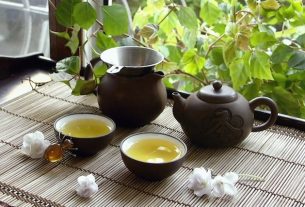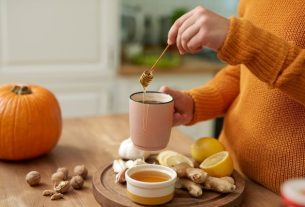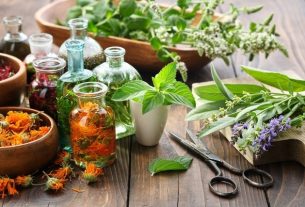Some home remedies, such as a sitz bath with chamomile or barbatimão, have antifungal and anti-inflammatory action, helping to treat candidiasis, an infection that is caused by excessive proliferation of the fungus. Candida albicanIt can affect the genital region, skin, mouth or intestine, causing symptoms such as itching, redness or burning.
Furthermore, the use of garlic, essential oil of tea tree and coconut oil can also help fight candidiasis, as they have antifungal, antioxidant and anti-inflammatory properties.
Another way to help treat candidiasis is to consume probiotic foods, such as yogurt or kefir; prebiotic foods, such as whole grains or green banana biomass; and anti-inflammatory foods, such as fresh vegetables and fruits and good fats, which help balance the intestinal flora and strengthen the immune system. See other foods that help strengthen the immune system.
Although they should not replace medical treatment, home remedies are interesting options and should be used as directed by a doctor or herbalist to complement the indicated treatment, helping to alleviate the symptoms of candidiasis. Discover other ways to treat candidiasis.

1. Sitz bath with barbatimão
A very effective, cheap and side-effect-free home remedy to help treat genital candidiasis is a sitz bath with barbatimão, a plant rich in flavonoids, terpenes and tannins with antibacterial, antifungal and astringent action. For the sitz bath, only the bark of the tree stem is used.
Ingredients:
- 20 g of dry barbatimão peels;
- 1 liter of water.
Preparation mode:
Boil the water with the barbatimão peels for 10 to 15 minutes. Cover and let rest until warm. Strain and mix with more water to fill a basin. After performing intimate hygiene, sit in the basin and take a sitz bath for 20 minutes once a day.
Non-use care: The sitz bath with barbatimão should not be used by women who are pregnant or breastfeeding, as there is no research on the risk of using the plant in these situations.
Yogurt and honey can be used to complement the doctor’s recommended treatment for vaginal yeast infection, as they are capable of relieving the itching and redness caused by the fungus, and can be consumed or applied externally.
3. Mouthwash with barbatimão
Barbatimão bark, a medicinal plant that has potent antifungal and antibacterial action, can also be used in mouthwash to help combat oral candidiasis.
Ingredients:
- 1 tablespoon (3g) barbatimão peels;
- 150 ml of water.
Preparation mode:
Boil the water with the barbatimão peels for 10 to 15 minutes. Turn off the heat and leave covered until it cools. Strain and swish 2 to 3 times a day.
Non-use care: As there is no research on the risk of use in pregnant or breastfeeding women, barbatimão mouthwash should not be used in these situations.
4. Coconut oil ointment and tea tree
Coconut oil is a food rich in lauric and caprylic acid with powerful antifungal and antimicrobial action, helping to combat genital candidiasis. The essential oil of tea treealso known as melaleuca, is a plant with powerful antibacterial and antifungal action, which reduces the proliferation of fungi, helping to treat candidiasis.
Ingredients:
- 1 tablespoon of coconut oil;
- 2 drops of essential oil tea tree.
Preparation mode:
Wash your hands well. In a bowl, mix coconut oil and tea tree essential oil with a spoon and apply to the genitals once a day, for up to 5 days.
5. Boric acid
Boric acid can be found in pharmacies in the form of vaginal ovules, and is mainly indicated for the treatment of vaginal fungal infections. It is recommended that the boric acid ovule be used according to the doctor’s instructions, and it may be recommended to use it for 7 to 10 days.
6. Sitz bath with chamomile tea
Chamomile tea has antimicrobial, anti-inflammatory, antifungal action, making it great for helping to treat and reduce the symptoms of genital candidiasis, such as itching and burning.
Ingredients:
- 3 tablespoons of dried chamomile flowers;
- 1 liter of water.
Preparation mode:
Boil the water, turn off the heat and add the chamomile flowers. Cover and let rest for 10 minutes. Strain and mix with more water to fill a basin. After performing intimate hygiene, sit in the basin and take a sitz bath for 20 minutes once a day. Another option is to rinse the intimate area once a day.
7. Propolis
Propolis is a resin rich in antioxidants with bactericidal and antifungal properties that helps strengthen the immune system and fight candidiasis. Discover all the beneficial properties of propolis.
Ingredients:
- 20 drops of propolis extract;
- 1 tablespoon of honey.
Preparation mode:
Dilute propolis extract in honey and take it once a day for 20 to 30 days to strengthen the immune system and help fight candidiasis.
Non-use care: Propolis extract is not recommended for people with allergies to bees, propolis or the components of the product formula. During pregnancy or breastfeeding, propolis should only be used under medical advice.
8. Sitz bath with apple cider vinegar
Vinegar is a food rich in gallic, lactic and citric acid, compounds with antimicrobial and anti-inflammatory properties, making it an important option to help treat genital candidiasis.
Ingredients:
- 2 spoons of apple cider vinegar;
- 1 liter of warm water.
Preparation mode:
Dilute the vinegar in warm water and transfer the mixture to a basin. After performing intimate hygiene, sit in the basin and take a sitz bath for 20 minutes once a day.
Non-use care: Apple cider vinegar should always be diluted before coming into contact with the skin, as it is an acidic substance that can cause irritation. This sitz bath cannot be used by pregnant women.
9. Sitz bath with baking soda
Sodium bicarbonate is a natural chemical substance with an alkaline pH and can be used in sitz baths to help reduce the acidity of the vagina, which hinders the growth and proliferation of the Candida fungus, and helps to alleviate the symptoms of itching and irritation from candidiasis.
Ingredients:
- 6 tablespoons of baking soda;
- 3 liters of warm water.
Preparation mode:
Dilute the baking soda in warm water and transfer the mixture to a basin and after performing intimate hygiene, sit in the basin and take a sitz bath for 20 minutes twice a day until the symptoms are relieved.
10. Oregano essential oil
Oregano essential oil has a powerful antimicrobial and fungicidal action, making it a great option to help treat skin candidiasis, inhibiting the growth of Candida albicans.
Ingredients:
- 2 drops of oregano essential oil;
- 1 tablespoon of vegetable oil (coconut, olive or almond).
Preparation mode:
In a bowl, mix the oregano essential oil with the vegetable oil well. With already cleansed skin, apply the mixture, massaging the area.
Non-use care: oregano essential oil is not recommended for people who are allergic to thyme, basil, mint or sage, as they may be sensitive to oregano oil, as the plant family is the same. Furthermore, this oil should not be used by children, pregnant or breastfeeding women.
What to eat to treat candidiasis
To treat candidiasis, it is important to prioritize prebiotic foods, such as whole grains and garlic, and probiotics, such as yogurt, kombucha and kefir, which will strengthen the intestinal flora, combating candidiasis. Discover other foods that are sources of probiotics.
In addition, you should also consume fresh vegetables and fruits, natural herbs and seeds that have powerful anti-inflammatory effects, strengthening the immune system. See more details on what nutrition should be like for candidiasis.
During candidiasis it is also important to avoid all types of sweets, such as ice cream, biscuits, cakes, and refined cereals, such as white bread or white pasta, as these foods cause an imbalance in the intestinal flora, which can worsen the candidiasis condition.

Sign up for our newsletter and stay up to date with exclusive news
that can transform your routine!
Warning: Undefined array key "title" in /home/storelat/public_html/wp-content/plugins/link-whisper-premium/templates/frontend/related-posts.php on line 12
Warning: Undefined array key "title_tag" in /home/storelat/public_html/wp-content/plugins/link-whisper-premium/templates/frontend/related-posts.php on line 13



